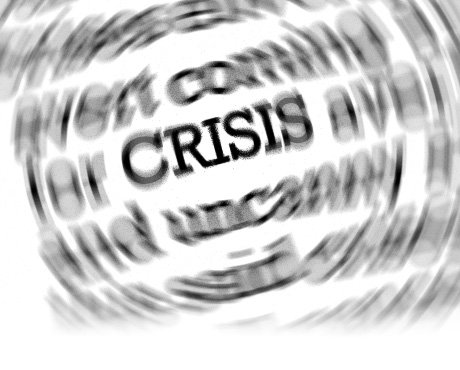When a crisis hits your organization, every second counts. A well-structured crisis communication template acts as your roadmap through turbulent times, helping you respond quickly and effectively to protect your organization’s reputation and maintain stakeholder trust. According to a PwC Global Crisis Survey, 95% of business leaders expect their organization to face a crisis in the future, yet only 39% have a crisis response plan in place. This guide will walk you through creating a practical crisis communication template that you can adapt and implement immediately when needed. We’ll cover the essential components, team structures, messaging frameworks, and real-world examples to help you build a robust crisis response system.
Building Your Crisis Communication Template Structure
The foundation of an effective crisis communication plan starts with a clear, accessible structure that team members can quickly navigate during high-pressure situations. Your template should include several key sections that guide your organization’s response from initial crisis detection through resolution.
Start with a plan overview section that outlines the template’s purpose and scope. This section should define what constitutes a crisis for your organization and establish activation criteria. Include clear triggers that indicate when to implement the plan, such as natural disasters, cybersecurity breaches, workplace incidents, or public relations issues.
Following the overview, create a quick-reference guide summarizing the most critical information. This one-page summary should include immediate action steps, key contact information, and primary communication channels. According to the National Management Association’s crisis communication guidelines, this “at-a-glance” section proves invaluable during the first crucial moments of a crisis.
Develop a detailed communication workflow that maps out the entire response process. This should include verification procedures, notification protocols, message development guidelines, approval processes, and distribution channels. Use flowcharts or diagrams to visualize these steps, making them easier to follow under pressure.
Essential Components of Your Crisis Communication Plan
Your crisis communication template must include several vital components to ensure a comprehensive response. Begin with a seven-step communication process that guides your team through crisis management:
- Crisis Verification: Establish procedures for confirming and assessing the situation
- Initial Notification: Detail how to alert key team members and stakeholders
- Situation Assessment: Create frameworks for evaluating crisis severity and impact
- Communication Management: Outline coordination procedures among team members
- Message Development: Provide guidelines for crafting appropriate responses
- Approval and Distribution: Define the review process and distribution channels
- Monitoring and Adjustment: Include procedures for tracking response effectiveness
Include pre-approved holding statements for common crisis scenarios. These statements provide immediate responses while your team develops detailed messaging. According to crisis communication experts, the first hour of response is critical for maintaining stakeholder trust.
Create message templates for different crisis types, ensuring consistency in tone and content while allowing for customization based on specific situations. Include guidelines for fact-checking and verification to maintain accuracy in all communications.
Establishing Your Crisis Communication Team
A well-defined team structure forms the backbone of effective crisis response. Your template should clearly outline team roles, responsibilities, and reporting relationships.
The core crisis communication team typically includes:
- Crisis Communications Director: Leads overall response and strategy
- Primary Spokesperson: Handles media interactions and public statements
- Media Relations Coordinator: Manages press inquiries and media monitoring
- Internal Communications Manager: Coordinates employee communications
- Social Media Manager: Oversees digital response and monitoring
- Legal Advisor: Reviews communications for legal compliance
- Subject Matter Experts: Provide technical expertise as needed
For each role, detail specific responsibilities, required skills, and backup personnel. Include up-to-date contact information and availability protocols. According to the Georgia Libraries crisis communication template, maintaining current contact lists and clear role assignments significantly improves response time and effectiveness.
Tailoring Messages for Different Audiences
Effective crisis communication requires customized messaging for various stakeholder groups. Your template should include frameworks for adapting communications across different audiences and channels.
Create separate messaging strategies for:
- Employees and internal stakeholders
- Customers and clients
- Media representatives
- Government officials and regulators
- Local community members
- Industry partners
- Social media audiences
For each audience, outline preferred communication channels, key concerns to address, and appropriate tone and language use. Include guidelines for maintaining message consistency while adapting content for different platforms and audiences.
Develop channel-specific templates for:
- Press releases
- Internal memos
- Social media posts
- Website updates
- Customer communications
- Stakeholder briefings
Implementing Your Crisis Communication Plan
The success of your crisis communication plan depends on proper implementation and regular updates. Create a maintenance schedule for reviewing and updating the template, including contact information, roles, and procedures.
Conduct regular training sessions to familiarize team members with the plan. According to crisis management experts, organizations that regularly practice their crisis response procedures show significantly better outcomes during actual crises.
Include evaluation metrics to assess the effectiveness of your crisis communication efforts. These might include:
- Response time measurements
- Media coverage analysis
- Social media sentiment tracking
- Stakeholder feedback assessment
- Message penetration metrics
Learning from Real-World Examples
Studying successful crisis communication responses provides valuable insights for your own planning. Consider these documented cases:
The City of Sequim’s crisis communication plan demonstrates effective stakeholder segmentation and message adaptation strategies. Their approach to maintaining transparency while managing sensitive information provides a practical model for other organizations.
The California Fire Chiefs Association’s template emphasizes the importance of scenario planning and advance preparation. Their framework for anticipating potential crises and preparing appropriate responses has proven effective in real-world situations.
Conclusion
Creating an effective crisis communication template requires careful planning, clear structure, and regular updates. Focus on developing clear procedures, defining team roles, and preparing message frameworks for different audiences and situations. Remember to regularly review and update your template, conduct training sessions, and learn from actual crisis responses to improve your plan’s effectiveness.
Take these next steps to implement your crisis communication template:
- Assess your organization’s specific crisis risks and communication needs
- Develop a basic template structure using the components outlined above
- Identify and assign crisis team roles
- Create initial message templates and holding statements
- Establish regular review and update procedures
- Schedule team training and practice sessions
With a well-prepared crisis communication template in place, your organization will be ready to respond quickly and effectively when challenges arise.















